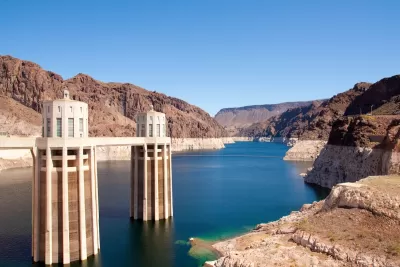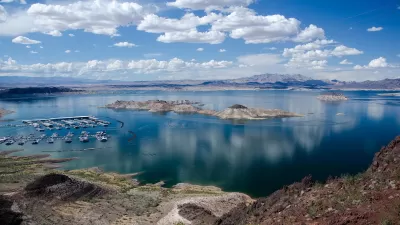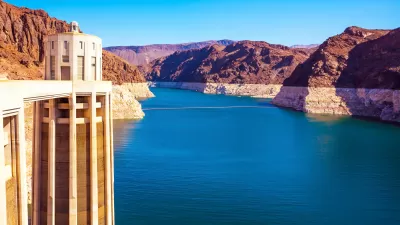In Nevada, efforts to conserve water include a ban on ornamental grass and regulations on swimming pool sizes.

Nevada and other Western states face another round of water restrictions as the water level in major reservoirs along the Colorado River continues to fall to historic lows.
As Jennifer Solis explains in the Nevada Current, “Water in Lake Mead is projected to fall below 1,075 feet in 2025, an elevation that would trigger a water shortage, according to a 24-month study by the Bureau of Reclamation.” The reservoir is currently at 37 percent capacity, threatening its ability to deliver water or produce hydroelectric power.
“States in both the lower and upper Colorado River basin are each allocated 7.5 million acre-feet of water, for a total of 15 million acre-feet. But officials acknowledge only 12.4 million acre-feet flows from the river each year, and flows continue to shrink due to climate change.” Solis notes that Nevada has not been using its full annual water allocation thanks to recent conservation efforts that include a ban on ornamental grass in many public spaces and limits on the size of swimming pools. “The Southern Nevada Water Authority managed to reduce individual water use to 89 gallons per person per day last year, the lowest since the early 1990s. But hotter, drier conditions this summer means water use per person is likely to increase this year.”
The Bureau of Reclamation expects that Lake Mead’s water level could fall far enough to trigger a Tier 2 shortage and deeper cuts by the end of 2025.
FULL STORY: Another year of water cuts for lower Colorado River Basin states, feds say

Maui's Vacation Rental Debate Turns Ugly
Verbal attacks, misinformation campaigns and fistfights plague a high-stakes debate to convert thousands of vacation rentals into long-term housing.

Planetizen Federal Action Tracker
A weekly monitor of how Trump’s orders and actions are impacting planners and planning in America.

San Francisco Suspends Traffic Calming Amidst Record Deaths
Citing “a challenging fiscal landscape,” the city will cease the program on the heels of 42 traffic deaths, including 24 pedestrians.

Defunct Pittsburgh Power Plant to Become Residential Tower
A decommissioned steam heat plant will be redeveloped into almost 100 affordable housing units.

Trump Prompts Restructuring of Transportation Research Board in “Unprecedented Overreach”
The TRB has eliminated more than half of its committees including those focused on climate, equity, and cities.

Amtrak Rolls Out New Orleans to Alabama “Mardi Gras” Train
The new service will operate morning and evening departures between Mobile and New Orleans.
Urban Design for Planners 1: Software Tools
This six-course series explores essential urban design concepts using open source software and equips planners with the tools they need to participate fully in the urban design process.
Planning for Universal Design
Learn the tools for implementing Universal Design in planning regulations.
Heyer Gruel & Associates PA
JM Goldson LLC
Custer County Colorado
City of Camden Redevelopment Agency
City of Astoria
Transportation Research & Education Center (TREC) at Portland State University
Jefferson Parish Government
Camden Redevelopment Agency
City of Claremont





























